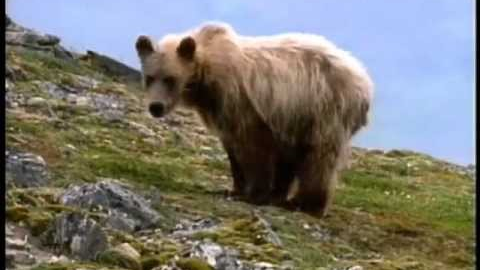Wild Alaska | Wildlife Refuge | Alaskan Nature Video - Becharof NWR
24,509 View
Share this Video
- Publish Date:
- July 21, 2024
- Category:
- Wildlife
- Video License
- Standard License
- Imported From:
- Youtube
Tags

Becharof National Wildlife Refuge is a National Wildlife Refuge in the Aleutian Range of the Alaska Peninsula of southwestern Alaska. Becharof National Wildlife Refuge, which covers an area of 1,200,000 acres (4,900 km2), was established in 1980 to conserve major brown bears, salmon, migratory birds, caribou, marine birds, and mammals and to comply with treaty obligations. It lies primarily in the east-central part of Lake and Peninsula Borough, but extends eastward into the mainland portion of Kodiak Island Borough. The refuge is administered from offices in King Salmon.
- SUBSCRIBE to Bright Enlightenment
http://www.youtube.com/BrightEnlightenment
- JOIN the club:
http://www.facebook.com/BrightEnlightenment
More about Becharof National Wildlife Refuge:
The Becharof National Wildlife Refuge covers an area of 1,200,000 acres (4,900 km2). It lies on a mountainous coastline containing the Ugashik-Peulik volcano and steep cliffs and the park contains a range of geographical features from mountains, broad valleys and fjords, to tundra and glacially formed lakes. Within the park lies the extensive Becharof Lake which at 300,000 acres (1,200 km2), 35 miles (56 km) long, 15 miles (24 km) wide and 600 feet (180 m) deep at deepest, it is second largest lake in Alaska and the largest in the entire National Wildlife Refuge System. The lake is fed by a number of rivers and streams, and contains some of the largest salmon populations in the world. The lake has the world's second largest run of sockeye salmon and estimates reveal that Becharof Lake and its tributaries provide the Bristol Bay fishery alone with six million adult salmon per year. Wildlife is abundant in the park and the high levels of salmon are enough to feed the largest concentrations of brown bears in Alaska. Moose, caribou, fox, wolverine, otter and beaver are also found as are seals, sea lions, sea otters and whales and various seabirds such as eagles found along the shore.
The Naknek River basin is one of the important wildlife habitats of the park. The river provides habitat for thousands of ducks, geese and swans that will later populate breeding lakes and ponds on the Alaska Peninsula and the area is closely monitored by biologists and ornithologists. The area contains notable populations of common merganser, common goldeneye, American green-winged teal, Canada goose, greater scaup, tundra swan, greater white-fronted goose, mallard, northern pintail, American and Eurasian wigeon, northern shoveler, red-breasted merganser, black scoter, and long-tailed duck. From mid March through to mid May, refuge biologists monitor waterfowl from established points that extend from the mouth of Naknek Lake to Kvichak Bay in Naknek and register the waterfowl by species approximately four times a week. During winter populations of red-breasted merganser, common goldeneye, bald eagle, willow ptarmigan, glaucous-winged gull, gray jay, black-billed magpie, common raven, chickadee, northern shrike, and the common redpoll amongst other birds can be spotted in the park. (summary from wikipedia.org)













